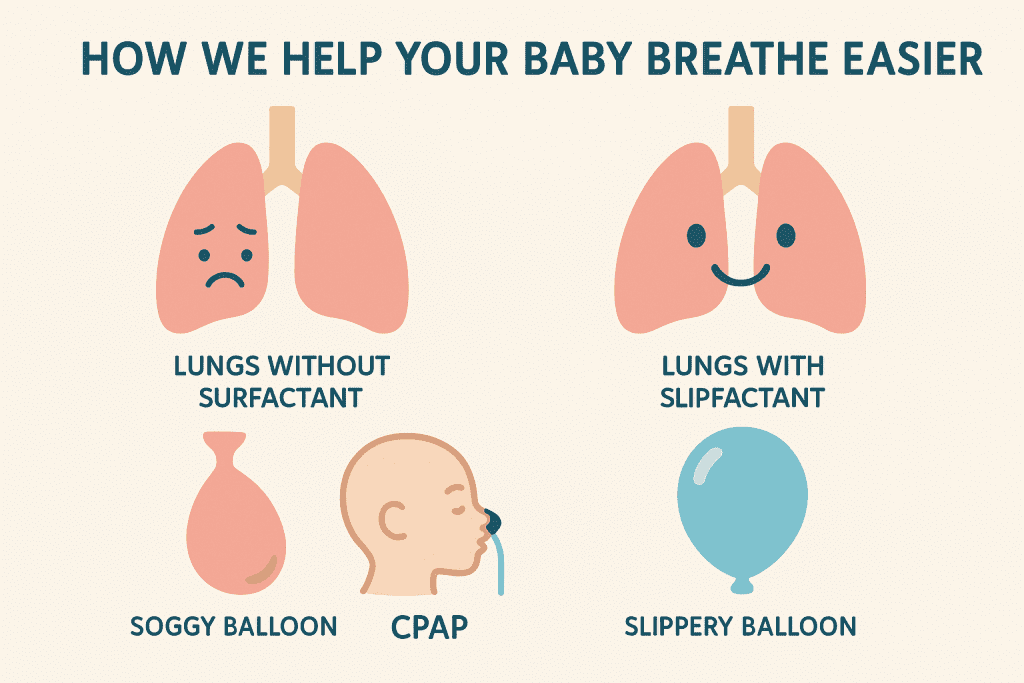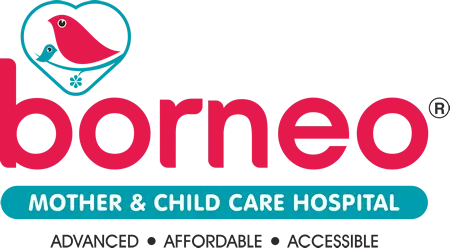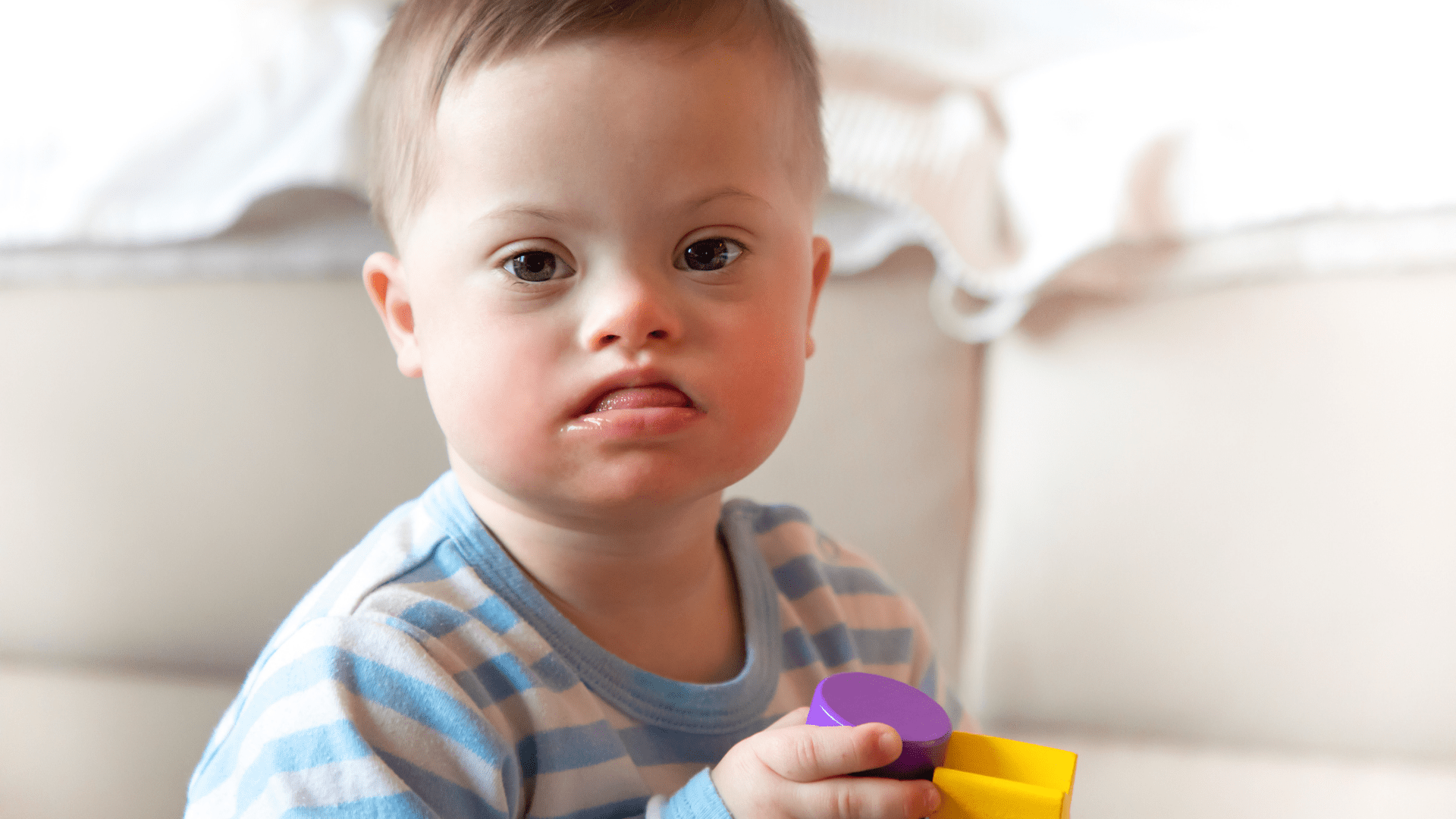In summary, this guide aims to provide a clear and reassuring explanation of Infant Respiratory Distress Syndrome ( IRDS ), a condition that, although frightening for any parent, is well understood and manageable with modern neonatal care.
We’ve broken down what IRDS is, explaining the crucial role of a substance called surfactant and why the condition most commonly affects a premature baby.
We’ve detailed the common signs of breathing problems in newborns that parents might observe and, most importantly, walked through the highly effective life-saving treatments used in the NICU, with a special focus on the remarkable impact of surfactant therapy and gentle ventilator support.
The most critical message to take away is one of hope. While an IRDS diagnosis marks the beginning of a challenging NICU journey, the advancements in neonatal medicine mean the outlook for babies with this condition is overwhelmingly positive.
This journey requires a combination of advanced technology, a highly skilled medical team, and a compassionate, family-centred environment—the very hallmarks of the best NICU hospital. With the right care, your high-risk newborn has an excellent chance of overcoming IRDS, growing stronger every day, and graduating from the NICU to thrive at home with you.
Introduction
Hearing a doctor say your newborn is having trouble breathing is one of a parent’s worst fears. If your baby has been diagnosed with Infant Respiratory Distress Syndrome (IRDS), your world can feel like it’s spinning. You’re likely scared, confused, and desperate for clear answers. Please know, what you are feeling is completely understandable.
At Borneo Hospitals, our mission is to provide not only the most advanced medical care but also the compassionate support and clear information you need to navigate this journey. This guide, with expert insights from our founder and senior paediatrician, Dr. Santosh Madrewar, is designed to be your trusted resource.
We will explain what IRDS is in simple terms, how it’s treated, and why there is so much reason for hope. Our goal is to be the best NICU hospital for your family, starting with this guide.
What is Infant Respiratory Distress Syndrome (IRDS)? A Simple Explanation.
IRDS is a condition seen in newborns whose lungs are not yet fully developed. It is the most common cause of breathing problems in newborns.
The Role of Surfactant: A Simple Analogy
Think of the tiny air sacs in the lungs like brand-new balloons. To inflate a new balloon for the first time takes a lot of effort. Surfactant is a natural, foamy substance that coats the inside of these air sacs.
It acts like the slippery coating inside a balloon, making it much easier to open up and fill with air. Without enough surfactant, the air sacs collapse with every breath, and the baby has to work incredibly hard to breathe.
Why It's Most Common in a Premature Baby
A baby’s body produces the most surfactant in the final weeks of pregnancy. Therefore, the earlier a baby is born, the less surfactant they have, and the higher their risk of developing IRDS. This is a primary reason why premature baby care so often takes place in a Neonatal Intensive Care Unit (NICU).
What Are the Signs? Recognising Breathing Problems in Newborns.
Doctors will usually diagnose IRDS right after birth. The signs are typically visible within the first few minutes or hours. You might notice:
- Rapid, shallow breathing.
- Grunting sounds with each breath.
- Flaring of the nostrils as the baby tries to pull in more air.
- Chest retractions: A noticeable pulling-in of the chest muscles between the ribs with each breath.
- Cyanosis: A bluish tint to the skin and lips due to lack of oxygen.

How Do Doctors Treat IRDS? A Look at Life-Saving Therapies.
A diagnosis of IRDS means your baby will be admitted to the NICU for specialised care. While this is a scary step, the treatments for IRDS are incredibly effective.
The Miracle of Surfactant Therapy
This is the cornerstone of IRDS treatment. We can give the baby an artificial version of the surfactant their body is missing. This medicine is administered directly into the baby’s lungs through a breathing tube.
The effect is often dramatic, making it easier for the baby to breathe almost immediately. Surfactant therapy has revolutionised the care of the preterm baby.
Breathing Support: From CPAP to a Neonatal Ventilator
While the surfactant does its job, your baby will need help with breathing.
1. CPAP (Continuous Positive Airway Pressure):
A small mask or soft prongs in the nose provide slightly pressurised air to help keep the lung sacs open.
2. Ventilator:
For more severe cases, a baby might need a hospital with neonatal ventilator. A breathing tube is placed into their windpipe, and the machine does the work of breathing for them, allowing their tiny body to rest and heal.
Supportive Neonatal Care in the NICU
Alongside breathing support, your baby will receive comprehensive care at the best NICU hospital. This includes being placed in an incubator to stay warm, receiving nutrition through an IV line or feeding tube, and being closely monitored by our expert neonatologists and nurses.
What is the Outlook for a Baby with IRDS?
Thanks to surfactant therapy and advanced respiratory support, the outlook for babies with IRDS is excellent. Most babies respond very well to treatment within a few days and go on to live healthy, normal lives without any long-term complications. The journey can feel long, but modern medicine has made this a very treatable condition.
Your Hopeful Path Through the NICU Journey
In summary, this guide has aimed to provide a clear and reassuring explanation of Infant Respiratory Distress Syndrome (IRDS), a condition that, while frightening for any parent, is very well-understood and manageable with modern neonatal care.
We’ve broken down what IRDS is, explaining the crucial role of a substance called surfactant and why it primarily affects a premature baby. We’ve detailed the common signs of breathing problems in newborns that parents might observe and, most importantly, walked through the highly effective life-saving treatments used in the NICU, with a special focus on the remarkable impact of surfactant therapy and gentle ventilator support.
The most critical message to take away is one of hope. While an IRDS diagnosis marks the beginning of a challenging NICU journey, the advancements in neonatal medicine mean the outlook for babies with this condition is overwhelmingly positive.
This journey requires a combination of advanced technology, a highly skilled medical team, and a compassionate, family-centred environment—the very hallmarks of a top-tier NICU. With the right care, your high-risk newborn has an excellent chance of overcoming IRDS, growing stronger every day, and graduating from the NICU to thrive at home with you.

Consult Our Experts
If your baby is facing a diagnosis of IRDS or other breathing difficulties, we know you want the absolute best care. The neonatal team at Borneo Hospitals is equipped with state-of-the-art technology and deep expertise to manage the most critical conditions.
You can visit your nearest Borneo Hospital branch in Thane, Nashik, Waluj, or Raipur.
If you need a consultation or a second opinion from a neonatologist near me, please call our helpline for advice. We invite you to make an appointment to speak with our team, led by our esteemed Senior Paediatrician and Founder, Dr. Santosh Madrewar (MBBS, DCH).
Further Reading & Authoritative Sources
World Health Organisation (WHO): Preterm birth (Provides context as prematurity is the main cause).
National Heart, Lung, and Blood Institute (NIH, USA): Respiratory Distress Syndrome
American Lung Association: Infant Respiratory Distress Syndrome
Cochrane Library (Research Review): Prophylactic versus selective surfactant in preventing morbidity and mortality in preterm infants (Evidence on surfactant use).


